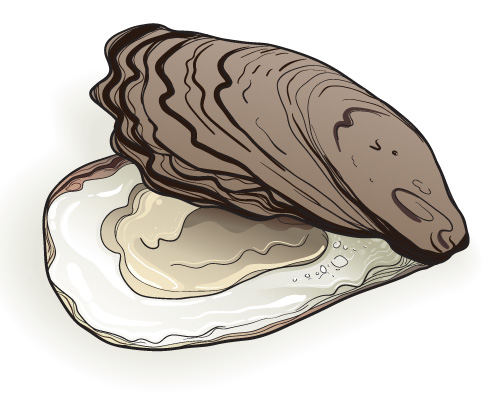 A shellfish farmer grows a sustainable fishery
A shellfish farmer grows a sustainable fishery
BY HANNAH WALLACE
 Cultivating Profit. Oyster farming is a tricky business — you can’t wantonly meet demand or you won’t have any oysters left to sell. And you’re reliant on the health of the oceans, which have been acidifying in recent years, making it hard for oyster larvae to mature. Yet Oregon Oyster Farms co-owner Xin Liu is striking a balance between conservation and profit. Over the past 16 years, he has grown revenue from $700,000 annually to $1.6 million. The company had just nine employees when Liu and two partners bought it from Newport Pacific in 1997. Today his staff numbers 25, including shuckers, packers, drivers, field crew and retail workers.
Cultivating Profit. Oyster farming is a tricky business — you can’t wantonly meet demand or you won’t have any oysters left to sell. And you’re reliant on the health of the oceans, which have been acidifying in recent years, making it hard for oyster larvae to mature. Yet Oregon Oyster Farms co-owner Xin Liu is striking a balance between conservation and profit. Over the past 16 years, he has grown revenue from $700,000 annually to $1.6 million. The company had just nine employees when Liu and two partners bought it from Newport Pacific in 1997. Today his staff numbers 25, including shuckers, packers, drivers, field crew and retail workers.
Clamoring for more. Liu, who sold a few million oysters last year, all from his 500-acre site on Yaquina Bay, is in the enviable position of having more domestic demand than he can supply, even as demand surges from Asia. In addition to supplying Oregon restaurants, he has a standing order from New York City’s Grand Central Oyster Bar for Kumamoto and Pacific oysters. About 10-15% of his oyster harvest is flown to Taiwan and China. Yet Liu has had to turn down eager buyers from Hong Kong and San Francisco, who have been awaiting his oysters for years. “Hong Kong keeps bugging me,” Liu says. “But I don’t have enough to sell to Hong Kong.”
Consider the Oyster Bed. Last fall Liu and Mark Wiegardt from Whiskey Creek Shellfish Hatchery purchased Pearl Point Oyster Company, which included a 72-acre oyster bed in Netarts Bay. “Netarts Bay is one of the cleanest bays on the West Coast,” says Liu. “It produces very good briny oysters.” There they plan to grow smaller-size Kumamoto and Pacific oysters; larger ones will be harvested in Yaquina Bay. Liu calls these 7- to 10-inch oysters, which can take as long as seven years to grow and command top dollar in China, “oyster steaks.” Though he won’t know for another 18 months what the growth rate and density is like in Netarts Bay, Liu hopes to have enough oysters to start selling to San Francisco restaurants — and perhaps a few lucky Hong Kong buyers — by next summer.
Conservation beckons. In addition to the Pacific and the Kumamoto, Liu grows the recently reintroduced Olympias — “Olys” — which are native to the West Coast. Prized for their diminutive size and tangy flavor, Olys were overharvested and nearly wiped out a century ago. Recently Liu started working with the Wetlands Conservancy, the Nature Conservancy and local Siletz tribes to ramp up restoration efforts in Yaquina Bay. “It’s really hard to get this population back,” says Liu, noting it takes Olys two and a half to three years to grow to the size of a half-dollar coin. Despite their cult-like popularity, Liu only sells Olys in limited quantities — five to 10 dozen a week. A model of restraint, Xin Liu aims to show that running a profitable shellfish farm is not mutually exclusive with managing the ocean’s resources responsibly.


